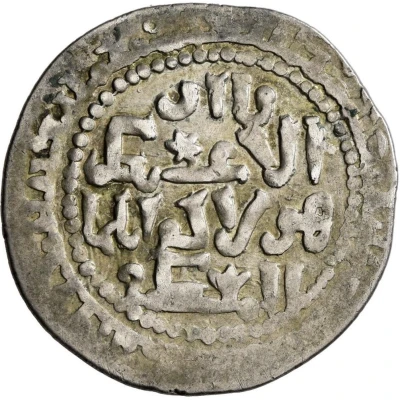


Dirham - temp. Hulagu / Abaqa Qa’an al-‘Adil Type
| Silver | 2.80 g | 20 mm |
| Issuer | Ilkhanate |
|---|---|
| Type | Standard circulation coin |
| Years | 643-670 (1245-1272) |
| Calendar | Islamic (Hijri) |
| Value | 1 Dirham (0.7) |
| Currency | Dinar (1256-1388) |
| Composition | Silver |
| Weight | 2.80 g |
| Diameter | 20 mm |
| Shape | Round (irregular) |
| Technique | Hammered |
| Orientation | Variable alignment ↺ |
| Demonetized | Yes |
| Updated | 2024-10-06 |
| Numista | N#227204 |
|---|---|
| Rarity index | 94% |
Reverse
Shahadah in centre (text, possible date, around outside)
Lettering:
لا اله الا
الله محمد
رسول الله
Translation:
There is no god but
God, Muhammad
is the Messenger of God
Comment
"2132 AR dirham (2.88g), hexagram / square, 21-23mm, known dated 643, then almost every year 650-670
C [Common]
Qa’an al-‘adil or qa’an al-‘adil al-a‘zam within the obverse hexagon, kalima within the reverse square, date & mint in the reverse margin. Dirhams of 643 are usually very well struck, later dates increasingly crude.
This type was struck mainly at Tabriz. Other mints are very rare. Some dates between 644 and 649 have been reported, but never confirmed; 643 was probably a frozen year until 649."
Interesting fact
One interesting fact about this coin is that it was issued during the reign of Hulagu Khan and his son Abaqa, who were prominent leaders of the Ilkhanate Empire, a Mongol khanate that ruled over much of the Middle East and Central Asia during the 13th century. The coin's design features an inscription in Arabic that includes the name of the ruler and the date of issue, as well as a stylized representation of a lion, which was a symbol of the Mongol Empire. Despite being made of silver, the coin is relatively small in size, weighing only 2.80 grams, which reflects the economic and monetary policies of the Ilkhanate Empire during this period.



